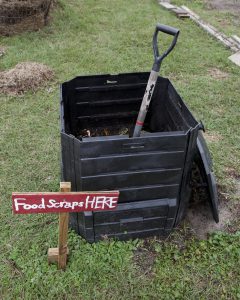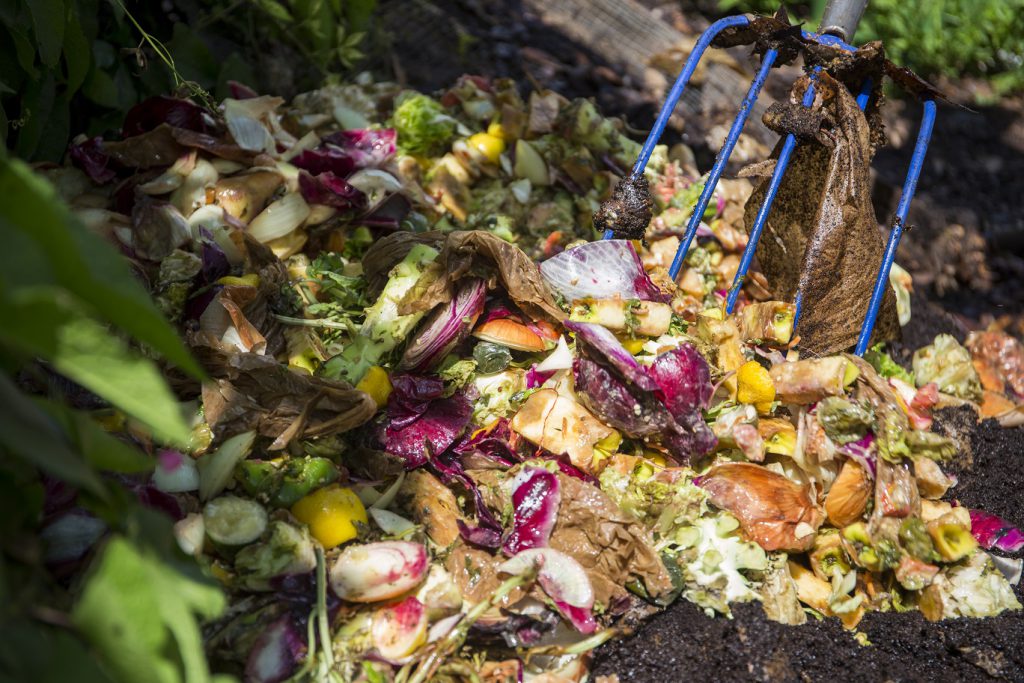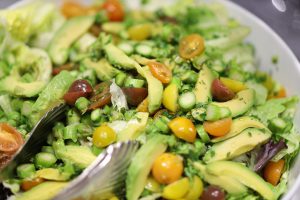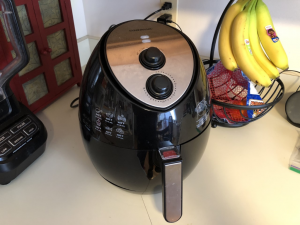
by Samantha Kennedy | Jul 9, 2021
I have just wrapped up my three-day Kitchen Creations camp and am happy to report that it was a big hit with the campers. Each day had a different country theme. Day 1 was Italian, Day 2 was Mexican, and Day 3 was American. All the dishes the kids made, including dessert, represented that day’s country.
The recipes ranged from simple to more complex, allowing the kids to build on basic skills to learn more advanced ones. For some campers, boiling a pot of water was a daunting task. For others, they learned how to caramelize and julienne. The campers worked in teams to create two main dishes, a salad, and a dessert each day, which was shared with the entire group.
I am pleased to announce there were no leftovers. The kids either ate it all, or wanted to take their culinary creations home to share with their families. If that is not a testimony to the camp’s success, I do not know what is.
I also was impressed with the campers’ willingness to try new things. Many of them were skeptical about the vegetable lasagna we made on Day 1, but nearly all the kids were willing to at least give it a try. And just like the baked ziti, Caesar salad, and chocolate biscotti we made that day, there was nothing left at the end of the day.
Kitchen skills are essential for healthy living, and teaching kids how to cook when they are young provides a strong foundation upon which to continue to build.

Kids can be eager helpers in the kitchen, even when it comes to cleaning up. Photo source: Samantha Kennedy, UF/IFAS Extension
Kids are eager learners in the kitchen. All the campers in Kitchen Creations were enthusiastic and ready to learn. They were proud of their creations, wanted to learn new skills, and were excited to use new tools and practice using familiar ones.
It is understandable that some parents may be reluctant to have younger kids in the kitchen. Maybe they are wary of possible injury. Maybe they are just so busy they do not have time to teach and supervise their children in the kitchen. It is a hectic world out there! But I know from personal experience with Kitchen Creations camp that kids, especially those interested in cooking, are more trustworthy and less accident-prone in the kitchen than some might expect.
The campers in my cooking camp are between the ages of 10 and 12 and in the four summers I have offered it, I have had only a few minor mishaps. The campers are aware of possible dangers in the kitchen. Things are hot. Things are sharp. Things are heavy. They are very conscientious about safety and handling things the correct way.
Kids who cook grow into adults who cook. Cooking is an important life skill that will be useful through someone’s entire life. Whether it is a student putting together quick, healthy meals and snacks to help them study, a busy parent trying to balance the responsibilities of everyday life while planning and making nutritious meals for their family, or a doting grandparent making something special for their grandkids, cooking is vital and brings people together.
Cooking is life.
I encourage you to support the budding chefs in your life. Instead of turning them away, allow them to help. Taking the time to prepare a meal together and then sharing that meal with loved ones builds stronger relationships while teaching important skills for a successful life.
UF/IFAS is an Equal Opportunity Institution.

by Samantha Kennedy | May 13, 2021
I would like to continue on the theme of reducing food waste by talking more specifically about ways to use food scraps effectively to prevent them from ending up in the landfill.
As I was thinking about this topic, I was reminded of a funny scene from the 1982 film Night Shift, where Michael Keaton’s character, Billy Blaze, says into his tape recorder, “Idea to eliminate garbage: edible paper. You see, you eat it, it’s gone. Eat it, it’s out of there. No garbage.” Think about how much less waste would go into our landfills if we could just eat paper!
It is the same concept for food waste. As much as 40% of food grown, processed, and transported in the United States will never be eaten, destined to end up in the landfill. That is literally thousands of tons of food wasted each year. But what if we could help reduce that amount?

Got leftover veggie scraps? Instead of throwing them away, save them for a delicious veggie soup.
(Photo source: UF/IFAS)
Here are two great ideas for using leftover food scraps instead of throwing them away.
Cook with them. Leftover vegetables are great ingredients for a simple and delicious soup. Simply take the leftovers, combine them with an aromatic base of onions, garlic, and celery, add a liquid such as stock or broth (or water and white wine), throw in a generous helping of herbs, and cook for about 25-30 minutes. Then use an immersion blender or food processor (or stand-up blender) to blend into a creamy soup. Any type of vegetable works for this type of soup, from greens and cauliflower to parsnips and sweet potatoes, which makes it an ideal way to use up those scraps.
Another great way to use vegetable scraps is to make homemade stock. Vegetable parts such as carrot ends and peels, celery ends and greens, corn cobs, pea pods, and all the other bits trimmed off during food preparation can be used to make stock. Not in the mood to make stock right away? No problem! Veggie scraps can be saved in a zippered bag and kept frozen for up to six months.
When the time comes, simply dump the scraps into a large stock pot (that is why it is called a stock pot!) or Dutch oven, fill the pot 3/4 of the way with water, bring to a boil and simmer for at least 30 minutes. (The longer it simmers, the richer the flavor.) Strain it all through a sieve. The remaining liquid is the stock. Fresh stock can be stored 3-5 days in the refrigerator or frozen up to three months. Here is a simple resource from Cornell University Extension on how to make vegetable stock from kitchen scraps. (Here is another one from Tasty.co.)
Hold on! There are still scraps left over. What about those? Well, that brings me to the second great way to use kitchen scraps.

Food waste such as vegetable scraps can be added to compost to create a nutrient-rich fertilizer for home gardens.
(Photo source: Tyler Jones, UF/IFAS)
Compost them. Creating compost at home takes a little work and perseverance, but it can certainly pay off in the home garden. Nutrient-rich compost can add oomph to flower beds and vegetable patches and turn any garden into a showcase.
Vegetable scraps are perfect additions to any compost pile. Any vegetable scraps can be added to compost. Just remember to remove the little stickers, as those are not compostable.
According to the Environmental Protection Agency (EPA), there are many benefits to compost. It enriches soil, helping retain moisture and suppress plant diseases and pests. It reduces the need for chemical fertilizers. And it encourages the production of beneficial bacteria and fungi that break down organic matter to create humus, a rich nutrient-filled material. These fact sheets (this one and this one) from UF/IFAS Extension are a wealth of information about home composting.
The reduction of unnecessary food waste begins with us, the consumers. By learning how to use those scraps in useful ways, such as cooking and composting, we can help eliminate the excess food waste filling our landfills.
UF/IFAS is an Equal Opportunity Institution.

by Samantha Kennedy | Mar 17, 2021
Food waste is a huge problem here in the United States. Here are a few incredible facts: Food is the most common solid source of waste in American landfills. Anywhere from 25-40% of food grown, processed, and transported in the US will never be eaten. Food waste harms the environment and results in a lot of wasted money.
Looking for ways to reduce food waste? Just follow these six tips.
Plan meals carefully. Only purchase what will be eaten in a reasonable amount of time, especially perishable items. Buying large quantities of fresh produce, dairy, and other perishables may seem like a time-saving practice. However, throwing spoiled food away not only wastes money, but also time, since the spoiled items need to be replaced during another trip to the market.

Instead of throwing old fruits and vegetables away, turn them into nutrient-rich compost to help your garden thrive. (Photo source: Camila Guillen, UF/IFAS)
Freeze or re-use food whenever possible. Not all food freezes well. However, fresh fruits and vegetables freeze quickly and easily when handled properly and can last in the freezer for months. Vegetable scraps are also great for making compost, which enriches the soil and can help support the growth of backyard gardens.
Look at the sell by/use by/best by dates on food products. Try to purchase items with the longest shelf-life (the latest date) available. If a product is close to its sell by date, be sure to use it or freeze it quickly. Keep in mind, however, that just because a product is past its use by date does not mean it is unsafe to eat. Take it on a case-by-case basis. If there is no mold, pests, off odors, off colors, or off textures, the product is safe to consume. This is especially true for dry, non-perishable items.
Store food properly. Storing foods at the wrong temperatures can speed up the spoilage process. Keep the refrigerator between 37 and 39 degrees Fahrenheit. Dry goods storage should ideally be around 50 degrees F, but since this is not realistic for most of us, just make sure dry goods are stored in a cool, dry place outside of direct sunlight.
Stay organized. Arrange items so that the oldest stuff is in front. This helps ensure it is used first. Always label frozen foods with the item name and date it was first frozen and use within 12 months whenever possible. Foods frozen for longer than a year start to diminish in flavor and texture. Old food also tends to attract pests, so making sure things are used efficiently can help eliminate the risk of insects and rodents.
Donate non-perishables to those in need. Food banks and other community organizations are always looking for food donations to help the hungry. Non-perishable foods that have not surpassed their use by/sell by dates are always welcome donations. Instead of trashing it, share it with someone less fortunate.
In most cases, food affected by flood damage or other disasters should be discarded for safety reasons. Better to be safe than sorry. However, everyday food waste is completely avoidable if a few simple rules are followed. The amount of food thrown away each year in the US is disheartening. When shopping, being a little more mindful of quantities and dates can help reduce overall food waste, saving both money and the environment.
Additional Resources:
National Center for Home Food Preservation (University of Georgia Extension)
Food Waste Resources (Kansas State University Extension)
UF/IFAS is an Equal Opportunity Institution.

by Samantha Kennedy | Nov 10, 2020
It has often felt like time has dragged on in 2020, but despite all the challenges, time has continued to march on, and that means the holiday season is right around the corner. Thanksgiving is fast approaching; November 26th will be here before we know it. And while this year has been tough in many ways, we also have a lot for which to be thankful.
One of the ways we celebrate that gratitude is through a nice meal with friends and family. However, many of us have experienced financial difficulties over the last several months, which may put a damper on our traditional celebrations.
With that in mind, here are a few tips for saving money this Thanksgiving:

Keeping the sides simple and having guests contribute items to the meal are two ways to reduce the overall cost of a Thanksgiving meal. (Photo source: Tyler Jones, UF/IFAS)
Shop with a list. This is good advice for everyday shopping, too, but especially at the holidays, when there are just so many delicious seasonal goodies available and we might feel like splurging. Don’t get carried away, though! Stick to traditional favorites everyone enjoys and only get enough to feed the number of guests, not an army. And remember, if it’s not on the list, don’t buy it.
Shop early. Supermarkets often begin putting holiday food items on sale weeks before the main event. Planning ahead and purchasing ingredients early can save money in the long run. Also, think about purchasing canned and dry goods for next year’s festivities right after this Thanksgiving, as ingredient prices are reduced in order to sell them more quickly and make room for other items. Just remember to check the expiration/sell-by dates to make sure they do not expire before next year.
Choose one type of meat. Turkey is the traditional centerpiece to most American Thanksgiving meals, but it doesn’t have to be. Other popular meats include ham, lamb, roast, and prime rib. The key to saving money on the meat, however, is to choose just one. Meat is one of the most expensive items on a Thanksgiving menu, and, odds are, if there is an abundance of side dishes, there won’t be a need for as much meat.
Frozen over fresh. As for the turkey, go with a frozen store brand turkey. The savings could be significant over a name brand or fresh turkey. Just remember, frozen turkeys take time to thaw safely in the refrigerator. Plan for 24 hours of thawing time per five pounds of turkey. For example, a 15-pound turkey will take at least three days to thaw in the refrigerator. Remember to place the turkey in a pan to prevent juices from dripping onto other food in the refrigerator.
Make it a potluck. Ask guests to bring a dish to share with everyone else. This way, the expense is spread out over several people and everyone saves money. There are some really great free websites that allow people to sign up to bring certain items. Customizing the sign-up helps ensure that everything is accounted for and that there isn’t a pile of pumpkin pies but no side dishes.
For more information about holiday savings tips, contact Samantha Kennedy, Family and Consumer Sciences agent, at (850) 926-3931, or reach out to your local Extension office.
Additional Resources:
Five Steps to Seasonal Savings (UF/IFAS Extension)
Food Safety Tips for the Holiday Season (UF/IFAS Extension)
UF/IFAS is an Equal Opportunity Institution.

by Dorothy C. Lee | Oct 11, 2020

UF/IFAS Photo by Amy Stuart
Pumpkins are not vegetables they are fruits! Pumpkins, gourds, and other varieties of squash are all members of the Cucurbitaceae family. Pumpkins have been grown in the Americas for thousands of years. There was probably some kind of pumpkin served at the first Thanksgiving Feast.
Use & Preparation
To prepare fresh pumpkin for uses in baking, roasting or adding to casserole dishes, scoop out the seeds and cut the pumpkin into quarters and lay the pieces in a pan of water, filled to about one inch. Bake until the pumpkin is tender. Peel and mash. Put cooked pumpkin through a strainer or sieve.
Selection
Small to medium size pumpkins are best for baking and cooking. Look for heavy pumpkins, and ones that do not have a hollow sound.
Storage
Pumpkins should be stored in a cool dry place. Store pumpkins upside down so the stem end is on the bottom. Fresh field pumpkins can last 3 – 4 months. Cooked refrigerated pumpkins last 5 to 7 days and up to one month in the freezer.
Roasted Pumpkin Seed (in the microwave)
- 1 cup pumpkin seeds
- 1 tablespoon butter
- 1/4 teaspoon seasoned salt
- Remove any fiber clinging to pumpkin seeds
- Wash and drain well.
- Spread seeds in a single layer on a baking sheet to dry, stirring occasionally.
- Line a 9-inch microwavable dish with two layers of paper towels. Sprinkle seeds on the towels.
- Microwave at HIGH 10 – 14 minutes or until seeds are dry but still white, stirring every 5 minutes. Let stand 5 minutes.
- Place butter in a 2-cup measure, microwave until melted. Add seeds and salt, stir to coat.
- Serve as a snack.
Pumpkin Pie
FILLING:
- 3/4 cup packed brown sugar
- 1 3/4 teaspoons pumpkin pie spice
- 1/4 teaspoon salt
- 1 (12-ounce) can evaporated low-fat milk
- 2 eggs
- 1 1/2 cups of fresh pumpkin (cooked and drained)
CRUST:
- Frozen 9 inch deep pie crust
TOPPING:
- 1/4 cup whipping cream
- 2 teaspoons powdered sugar
Position oven rack to lowest position.
Preheat oven to 425 degrees. Prepare fresh pumpkin as directed above. Be sure to drain the pumpkin after cooking. Now you are ready to use the pumpkin in recipes. To prepare filling, combine first 5 ingredients in a large bowl, stirring with a whisk. Add pumpkin, and stir with a whisk until smooth. Pour pumpkin mixture into the crust. Place pie plate on a baking sheet. Place baking sheet on lowest oven rack. Bake at 425 degrees for 10 minutes. Reduce oven temperature to 350 degrees (do not remove pie from oven); bake an additional 30 minutes or until almost set. Cool completely on wire rack. To prepare topping, beat cream with a mixer at high speed until stiff peaks form. Fold in the powdered sugar until blended. Serve with pie. Yield 1 Pie, about 6 – 8 pieces.
Available Fresh
Harvested September – October

by Amy Mullins, PhD, RDN | Oct 9, 2020
By Matthew Poland and Amy Mullins, MS, RDN
Air fryers have become quite popular over the past few years, touted as a healthier alternative to deep-frying foods, while replicating the crispiness we all love. As a frequent user of an air fryer, I find times where I will catch myself talking family’s or friend’s ears off about how much I love my air fryer and how they should invest in one, too. Here are 3 reasons why an air fryer makes a great tool for any kitchen:
Health, Texture and Taste

Air fryers crisp food without the fat and calories of deep-frying.
Photo source: Matthew Poland
In my opinion, the number one reason to purchase an air fryer is the ability to make healthy alternatives to classically unhealthy foods. Fried foods consistently are given a thumbs-down from dietitians and other health professionals because the process of deep-frying foods exponentially increases their calorie content due to the nature of submerging foods in oils. However, a large reason why fried foods are so appealing is because of their texture. Deep-frying a food, specifically a breaded food, produces a crunchy exterior and a moist interior we’ve come to love. This is where an air fryer shines. Air fryers use circulating hot air to produce a very similar texture and taste to deep-fried foods, but can use up to 99% less oil (or even no oil), reducing calories by 70-80%, without sacrificing much in flavor (1).
Now, with anything, moderation is key, and this is not a suggestion to have chicken fingers and homemade French fries every night, just because they can be made healthier in an air fryer. However, this is a recommendation to curb cravings of greasy, high-calorie fast food meals by making them at home in an air fryer. In addition, the texture created by an air fryer is a perfect way to expand your dietary pallet, which leads me to my second reason for getting an air fryer: trying new foods.
New Food Experiences
With many kids, as well as adults, eating vegetables is not a desirable activity. They may be aware of the health benefits of vegetables, but when it comes to getting a vegetable past their nose and mouth, it can be a different story. A variety of preparation methods for vegetables exists, from raw to steaming to boiling. However, outside of roasting vegetables, many of these methods soften the texture of the food, which is often not appetizing to many people. Air frying then becomes the perfect method to produce crunchy, appealing vegetables that may just change some minds on whether or not an individual “likes vegetables.”
But the opportunities to try new foods are certainly not limited to just vegetables. From wings, to chicken kebabs, to eggplant parmesan, to air fried green beans, a wide variety of recipes exists for the air fryer. Often times, these recipes can be just as fast, easy, and even more delicious than using a conventional oven. This leads into my final point: the operation and cost of an air fryer.
Operation and Cost
Another benefit to air fryers is their ability to cook foods more quickly than in conventional ovens (or deep-fryers for that matter!). Air fryers reach cooking temperatures much faster than ovens can, but their small size can limit how much food can be cooked at one time, depending on the model. After a meal, cleanup is quick and easy, requiring only a wipe-down if little oil was used and cleaning maintenance is done regularly. Fortunately, air fryers also do not give off the same whole-house-consuming smells that deep-frying foods do.
Many of what could be considered “middle-of-the-line” models come with pre-programmed options for a variety of popular food choices. With the push of one button, it will let you know when the food is finished! Lastly: the cost of air fryers, which are actually quite reasonably priced. From simple, non-programmable fryers starting at around $40, to very snazzy two-basket, dual-zone fryers at around $150, there are various options to fit your exact needs.
In my experience, the air fryer has deservedly earned a spot on my ever-busy kitchen counter. Though they may not be as versatile as a conventional oven, or as quick as a microwave often, I believe they provide significant upsides that most people can find useful. Even if I haven’t convinced you to immediately run out and buy yourself an air fryer, I hope you have gained some insight into why you can’t stop hearing about them.
Matthew Poland is a Graduate Student in the Department of Food, Nutrition, and Exercise Sciences at Florida State University who is currently working on the Dietetic Internship to become a Registered Dietitian/Nutritionist (RDN).
References:
- Air-Frying: Is It As Healthy As You Think? (2020, August 19). Retrieved September 21, 2020, from https://health.clevelandclinic.org/air-frying-is-it-as-healthy-as-you-think/












